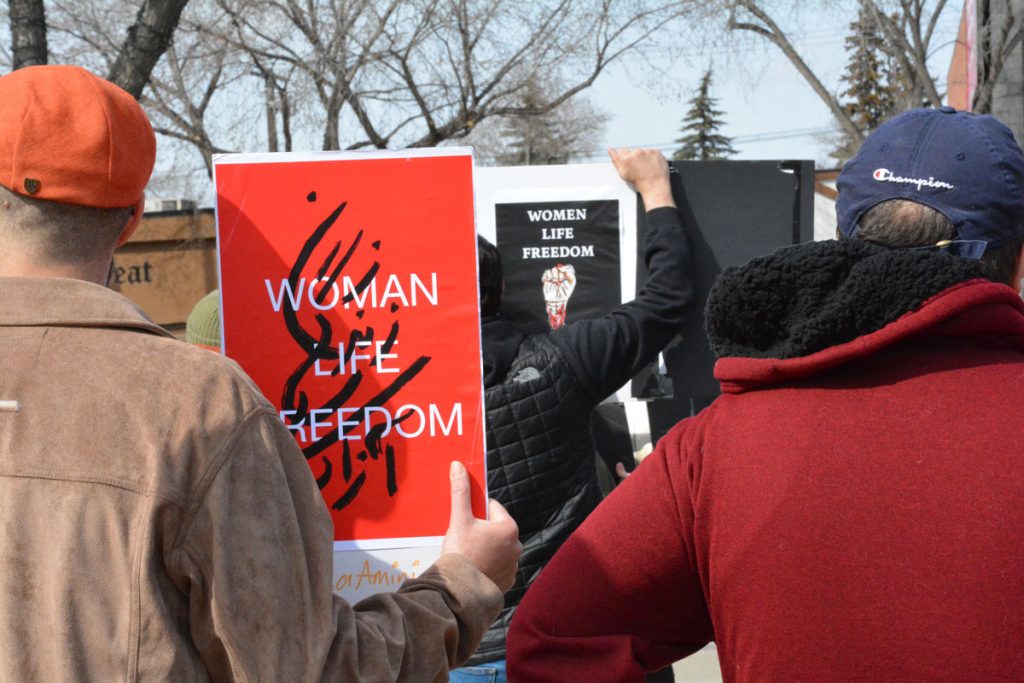Semi-finalist 2023
| Submitted by: | Amirhossein Fazlolah Firuzkohi |
| Department: | Modern Languages and Cultural Studies |
| Faculty: | Arts |
This research aims to trace the evolution of protest slogans in the linguistic landscape (i.e., any form of writing visible in public spaces) of Iran by comparing the wall writings during the 1979 Islamic revolution and the 2022 Woman-Life-Freedom movement. Wall writing and graffiti are often seen as a form of transgressive writing since they are unauthorized, or even banned by some sociopolitical institutions in some cases. This image depicts protest signs in Edmonton that read “Woman (زن)- Life (زندگی)- Freedom (آزادی)”, which is the most chanted slogan of this social movement. The protests in Iran were sparked by the death of Mahsa Amini in September 2022, who was under arrest by the morality police for not observing proper Islamic dress codes. “Woman-Life-Freedom” became so popular that the whole movement was named after it. Over the course of seven-month protests for women’s rights, life, and freedom, more than 500 young people- including Sarina Esmailzadeh, Hananeh Kia, Ghazaleh Chalabi, Hadis Najafi, Nika Shakarami, and many others- lost their lives. This research aims to understand how Iranians’ political ideologies have shifted from pro-government to anti-government over the past 43 years, as reflected in the country’s linguistic landscape.

